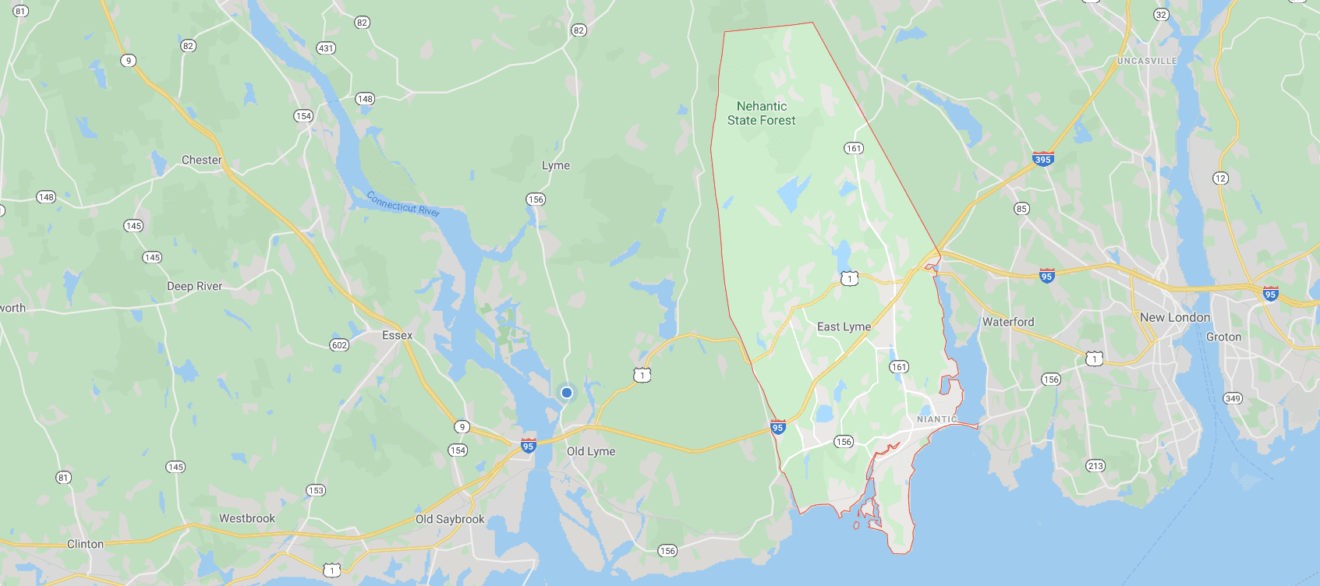EAST LYME — Town officials will hold a public forum on Wednesday, January 29, in Town Hall to offer a chance for East Lyme residents, and other stakeholders in the community, to weigh in on updating the town’s Plan of Conservation and Development, a document that provides a framework for economic development, growth, sustainability and conservation in the town.
“The state requires us to update it, but in practice it’s a great thing to update every 10 years or so anyway. It’s about town services, and it’s also a road map for any given 10-year period of a town,” explained Michelle Royce Williams, chair of the Planning Commission sub-committee tasked with updating the plan, in an interview with CT Examiner.
The plan is not binding and it’s not a mandate, said Williams, but it does serve as a point of reference for town officials. “How do we want to grow? What do we want to protect? And what services do we need to provide to maintain a sustainable and resilient community?”
Towns must update their Plans of Conservation and Development at least every 10 years to remain eligible for a wide range of state funding, including the Small Town Economic Assistance Program (STEAP), the Clean Water Fund, the Drinking Water State Revolving Fund, and grant programs related to housing, historic preservation, brownfields remediation, open space and farmland preservation.
Williams said that the town’s current Plan of Conservation and Development dates to 2009, with minor revisions in 2010. An updated plan is due to the state by December 1, 2020.
10 years later
The town’s Plan of Conservation and Development sub-committee first met in February of 2019, and began reviewing the current Plan of Conservation and Development, Williams said.
“A lot of things that were important to us in 2009 are still likely very important to the town and will probably not change,” she said. “There are some parts of the document where we’ve checked off that box. Other items we know that we haven’t done, but we also know why. And other things we haven’t done yet but we still hope to.”
The plan called for the town to make the Niatnic Main Street more visually appealing to visitors, investing in landscaping, planters, adding parking and pedestrian walkways, and encouraging collaboration between businesses. That part of the plan has been “a success story” for the town, said Williams.
Plans to create a village district or historic district for Flanders, on the other hand, have been less successful.
Since 2009, another major development in East Lyme has been the arrival of Costco on Flanders Road.
“I think it’s something that people may have strong feelings about one way or the other,” Williams said. “It’s certainly the first of its kind in our town, so it will be very interesting to see where the public lands on whether or not that’s something they want more of.”
A coastal community
Williams said that a quick review of responses to the survey suggested that “one of the overwhelming things people value about the town is their ability to access our coastlines,” including such areas as Rocky Neck State Park, McCook Point Park, Hole-in-the-Wall Beach, Cini Memorial Park, and the boardwalk.
But being a coastal community also comes with some environmental challenges.
“We’re a coastal community, and we’re going to face stronger coastal storms,” Williams said. “I don’t think that’s up for debate. As a coastal community, we’re required to address sustainability and resilience issues in our Plan of Conservation and Development. What should we be looking at? Are we prepared for power outages and what could we do to improve our resilience along the coastline?”
According to Williams, it is important to emphasize that the Plan of Conservation and Development is “not my plan, it’s the town’s plan,” and she said that Wednesday’s public forum will be an opportunity to gather information from residents in their own words about what they care about.“This is really just a listening exercise for us and it will guide our further research and conversations… the sub-committee is strictly there to listen and just get firsthand experience, and exposure to what people in town want to say about what should be in the document,” Williams said.

